Sumac fruit
Of the three sumacs native to Austin, here are the fruits of two of them. Above you have evergreen sumac, Rhus virens, from Far West Blvd. on November 3rd. Below you see prairie flameleaf sumac, Rhus lanceolata, from Arterial 8 on November 8th. From these fruits some people make sumac-ade, which I’ve tried and liked.

And here’s a closer look at another cluster:
You might also find it fruitful to check out the the winning photographs from the 2020 Siena International Photo Awards.
© 2020 Steven Schwartzman


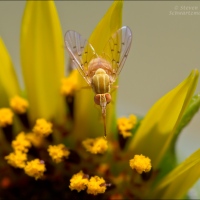
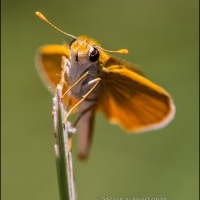
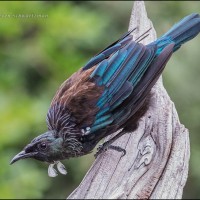
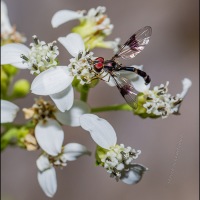
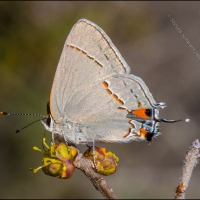
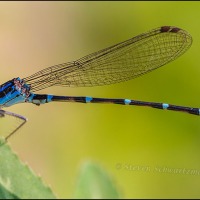

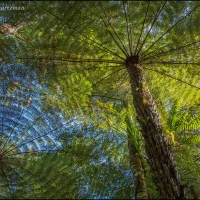

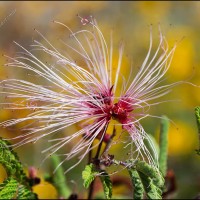
A beautiful display of sumacs, Steve. And yes, it’s fruitful to have a look at the photo awards. Thank you for sharing this outstanding work. I especially enjoyed the beauty of nature and the animals. The architecture as well, it’s all superb!
Dina
December 16, 2020 at 5:23 AM
Then I’m glad I included that link. A photographer in Austin recently forwarded it to a small group of us who’d been getting together a few times a year, and I passed it along to this online group.
Each autumn flameleaf sumac offers a double harvest of red in its fruit and its leaves. (And did you know that English harvest is the cognate of German Herbst?)
Steve Schwartzman
December 16, 2020 at 5:36 AM
No, I didn’t know that. I have just spent a few minutes learning how to use the word cognate, it’s new me – to us both, so Klausbernd and I say thank you for this introduction!
Today we will make the last batch of German Christmas cookies. Bake – backen.
Der Verein Deutscher Sprache (VDS) elected back in 2008 Xmas as the most annoying and superfluous word. 😉
Dina
December 17, 2020 at 4:41 AM
Cognate is a good word: co-[g]natus, literally ‘born together [from a common source].’ I would’ve assumed Xmas as an abbreviation of Christmas goes back no farther than the 1900s, yet when I checked a dictionary I found it already attested in 1551. While I’ve always pronounced it the same as Christmas, dictionaries listĕks-məs as an alternate pronunciation. The X is the same Greek letter that is the first in Χριστός [khrīstos], and the X also pictorially represents the Christian cross.
Steve Schwartzman
December 17, 2020 at 6:26 AM
I have never seen sumac fruits, nor have I heard of sumac-ade. Your images capture the untouched clusters in full ripeness. I wonder how quickly wildlife devours these beauties?
Littlesundog
December 16, 2020 at 6:45 AM
Rhus glabra, which flourishes in your part of Oklahoma (and just about everywhere in the state except the panhandle), also produces attractive clusters of red fruit:
https://en.wikipedia.org/wiki/Rhus_glabra
In addition, that species gives the benefit of leaves that turn red in the fall. If you can get in touch with native plant people in your area (https://www.oknativeplants.org/), they might be able to tell you where to find Rhus glabra trees near you so you can check out their fruit and changing leaves next fall.
I don’t know how long the fruit clusters of Rhus lanceolata in central Texas resist animals, but certainly long enough each year for me to get luscious pictures like the two in this post. I assume Rhus glabra fruit would also last long enough.
Steve Schwartzman
December 16, 2020 at 7:03 AM
The fruit of the sumac tree in the first picture truly stands out against the blue sky. I like this photo very much, Steve.
Peter Klopp
December 16, 2020 at 7:59 AM
In the first picture you’ve recognized one of my standard ploys, which is to use a blue sky as an isolating and color-contrasting element. I’m glad you find it effective.
Steve Schwartzman
December 16, 2020 at 8:06 AM
I need to use this ploy whenever the blue sky appears in our relatively gray winter months.
Peter Klopp
December 17, 2020 at 9:09 AM
Dp play with that ploy. Make what advantage you can of your infrequent blue sky days.
Steve Schwartzman
December 17, 2020 at 11:16 AM
Serendipity strikes again. I spent a good bit of time examining a mysterious shrub on the Willow City loop, and looking through some sources after I got home, but I couldn’t identify it until I saw your first photo. Sure enough, I had found R. virens. Throughout the area, the other sumacs were seriously faded. Only a few leaves remained, and I didn’t see any fruits. My friend who has sumac on her property said the birds made shorter work of the fruits than usual this year, perhaps because of the drought.
shoreacres
December 16, 2020 at 8:48 AM
I’m happy to have obliged on the identification. Rhus virens probably gets much shorter shrift from the general public than the other sumacs precisely because it’s (largely) evergreen and doesn’t put on the colorful fall display that flameleaf sumac and similar species do. The fruits of the evergreen sumac, though small, are still larger than those of the flameleaf, and may provide more bang for the buck to animals looking for food.
Steve Schwartzman
December 16, 2020 at 8:58 AM
I haven’t seen any fruit on our Flame Leaf Sumac yet. Maybe I need to have a closer look.
Pit
December 16, 2020 at 8:53 AM
My first thought was that maybe you have a male tree, but when I checked I found the species is monoecious, meaning male and female flowers grow on the same tree. If you haven’t found fruit on yours yet, I’d say it’s too late for this year; these pictures show a fullness of fruit five weeks ago, and the clusters will have darkened and dried a lot since then.
Steve Schwartzman
December 16, 2020 at 9:07 AM
Melissa notes in the comment following yours that her sumac didn’t bear fruit for the first few years. Is your flameleaf sumac a young tree?
Steve Schwartzman
December 16, 2020 at 9:31 AM
My sumac didn’t bear fruit for the first few years. I’ve heard of people using the fruit, although not for sumac-ade. Sounds interesting.
melissabluefineart
December 16, 2020 at 9:19 AM
If you’d like to try sumac-ade next year, here’s an article about it, including a recipe:
https://healthstartsinthekitchen.com/sumac-ade-a-natural-alternative-to-kool-aid/
Steve Schwartzman
December 16, 2020 at 9:33 AM
Thanks! I’ll give it a try next fall and let you know 🙂
melissabluefineart
December 17, 2020 at 8:57 AM
And by then we should be post-pandemic.
Steve Schwartzman
December 17, 2020 at 11:15 AM
It is exciting to think the end of the pandemic is in sight, albeit still a little way off.
melissabluefineart
December 18, 2020 at 9:38 AM
Give it at least several months, based on the way things are shaping up.
Steve Schwartzman
December 18, 2020 at 1:00 PM
Yes, that’s what I figure.
melissabluefineart
December 19, 2020 at 8:57 AM
They’re festive this time of year! I don’t think I’ve tried anything with Sumac in it. I’ll have to look up some uses for this plant and berries just cause. 🤪
circadianreflections
December 16, 2020 at 9:58 AM
Festive in both fruit and foliage, so I get a double whammy out of sumacs each fall. Here’s an article about sumac-ade, including a recipe, if you’d like to give it a try next year:
https://healthstartsinthekitchen.com/sumac-ade-a-natural-alternative-to-kool-aid/
Steve Schwartzman
December 16, 2020 at 10:04 AM
😀
circadianreflections
December 16, 2020 at 10:07 AM
I esp. like the latter
Eliza Waters
December 16, 2020 at 7:39 PM
Call it a colorful conglomerate.
Steve Schwartzman
December 16, 2020 at 9:32 PM
This is one I remember from Oklahoma. (The name sounds like Rhus lancea, which is a small evergreen tree.) If I remember correctly, it was naturalized, so technically not native. There was another species there that I do not remember. It was probably Rhus glabra. I never met Rhus virens. There is a naturalize Rhus here that I can not identify. I can not even remember the name of what it resembles. The native Rhus looks nothing like it, and if I did not know better, I would not recognize it as a Rhus.
tonytomeo
December 16, 2020 at 9:52 PM
Never having heard of Rhus lancea, which is indeed confusingly similar to Rhus lanceolata, I looked it up and found it’s from South Africa. I also noticed there seems to have been reclassification to Searsia lancea. I assume genetic analysis prompted the renaming, but it has the advantage of eliminating the confusion with Rhus lanceolata.
Steve Schwartzman
December 16, 2020 at 10:03 PM
As much as I dislike reclassification, this one makes sense. Rhus lancea is more like a Schinus that a Rhus. I am none too keen on it, but it is tough, and works well as a street tree for small streets.
tonytomeo
December 16, 2020 at 11:58 PM
Do you like Mediterranean food? Ground sumac is a staple in mixed salads and is a delightful addition!
krikitarts
December 18, 2020 at 3:05 AM
Not long ago Linda sent us some Mediterranean sumac seasoning so we could finally try it. I suspect the native Texas species could be used the same way.
Steve Schwartzman
December 18, 2020 at 7:26 AM
This fruit was new for me. I read the recipe and found out that this fruit has a lot of applications.
picpholio
December 19, 2020 at 12:11 PM
Happy new. My understanding is that the most common culinary use is made of a Eurasian sumac species, Rhus coriaria: https://en.wikipedia.org/wiki/Rhus_coriaria.
Steve Schwartzman
December 19, 2020 at 1:02 PM
Hi Steve ..thanks so much for sharing the photo awards ..Some powerful photography there.
I have sumac in my spice drawer, but I had no idea how stunning the fruit looks on the bush
Julie@frogpondfarm
December 22, 2020 at 11:57 PM
You’re welcome, Julie. Now that you mention it, I don’t know what the plants look like that many familiar spices come from.
Steve Schwartzman
December 23, 2020 at 2:45 AM